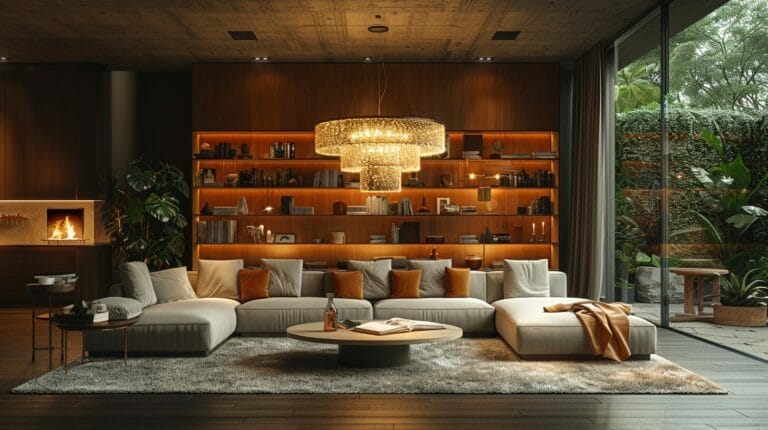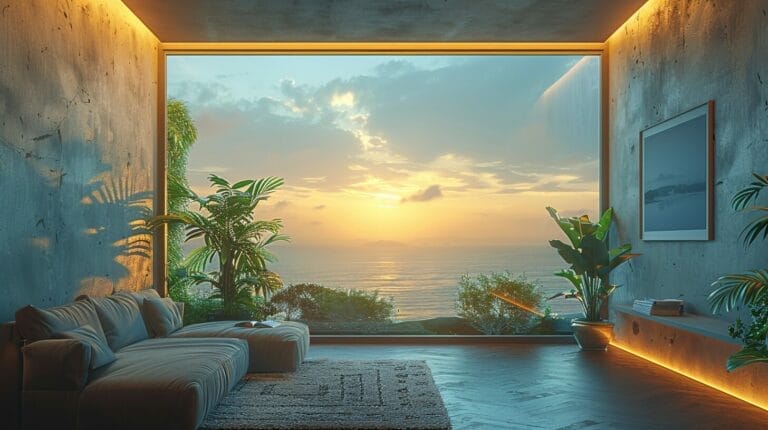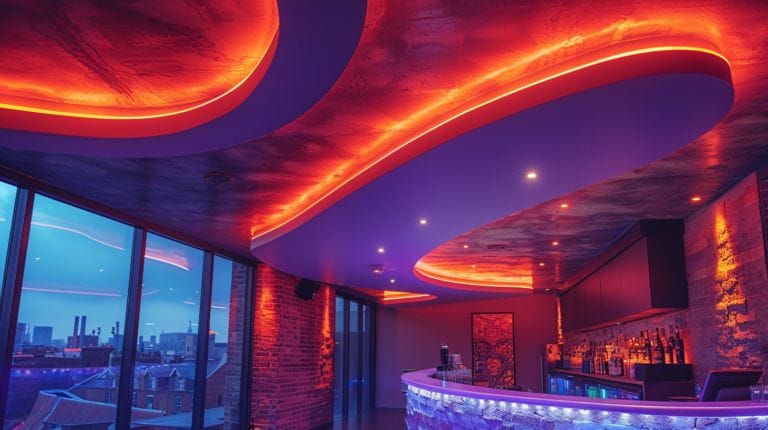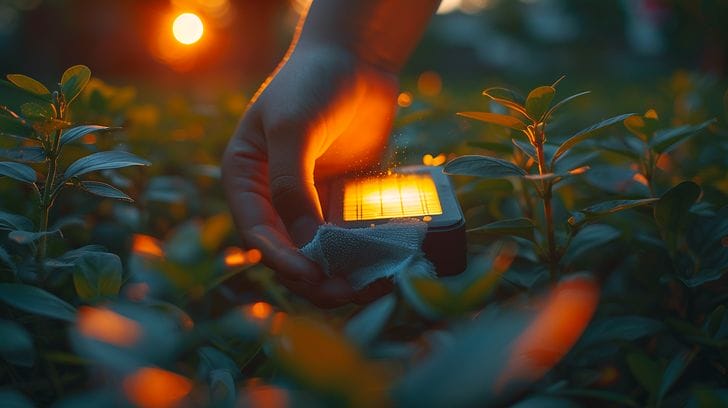Are LED Lights Better For Your Eyes Than Fluorescent?
In the ongoing debate about lighting options, LED lights may seem like a sight for sore eyes compared to fluorescent lights. But before we draw any conclusions, let’s delve into the nuances and implications of both light sources on our eye health and get the answer to the question: Are LED Lights Better For Your Eyes Than Fluorescent?
Key Takeaways
- LED lights emit less blue light and glare, making them better for eye health.
- Fluorescent lights flicker and emit more UV radiation, posing risks to the eyes.
- Manufacturers are developing LED bulbs with filters to reduce blue light exposure.
- LED lights offer advantages over fluorescent lights in reducing eye strain and discomfort.
Understanding the Impact of Light Sources on Eye Health

When evaluating the impact of light on our eyes, it’s essential to consider two common artificial light sources: LED and fluorescent lights. Both play a significant role in causing eye strain and fatigue. LED lights, while renowned for their energy efficiency and longevity, emit a higher amount of blue light compared to traditional fluorescent bulbs. This blue light exposure can contribute to digital eye strain, a condition characterized by discomfort and fatigue after extended digital device use.
Moreover, the intensity of these artificial light sources can create glare, a stark contrast between the brightness of the light source and its surrounding environment. Glare can lead to visual discomfort, reduced contrast sensitivity, and difficulties in focusing, impacting overall visual acuity.
Fortunately, advances in lighting technology are addressing these issues. Manufacturers are developing LED lights with reduced blue light emissions and better glare control mechanisms. Understanding these factors can help us make informed decisions to prioritize our eye health in our increasingly illuminated environments.
Assessing the Effects of LED Lights on Human Eyes

Evaluating the effects of LED lights on human eyes involves understanding key factors:
- Blue Light Exposure: LED bulbs emit substantial blue light, linked to potential eye damage over time. Prolonged exposure may contribute to digital eye strain and disrupt sleep patterns.
- UV Radiation: Unlike fluorescent lights, LED bulbs emit minimal ultraviolet (UV) radiation, known to be harmful to the eyes, making them a safer option regarding UV exposure.
- Eye Damage Risk: Although LED lights are safer than incandescent bulbs due to lower heat emissions, the blue light they emit can pose a risk to eye health. As technology advances, manufacturers are developing LED bulbs with built-in filters to reduce blue light emissions, aiming to provide a safer lighting option.
Fluorescent Lights: A Closer Look at Their Effect on Eyes

Fluorescent lights impact vision due to their unique operating mechanisms and potential effects on the eyes. These bulbs emit UV light and blue light, both of which can contribute to retinal damage over time. Unlike LED lights, the UV light from fluorescent lights can be detrimental to eye health. Prolonged exposure may increase the risk of conditions like cataracts and other eye issues.
Additionally, the flickering nature of fluorescent lights can cause strain and discomfort for some individuals. This flicker can lead to headaches, eye strain, and migraines in sensitive individuals. Considering these potential risks, it’s crucial to be mindful of our lighting choices.
Comparing LED and Fluorescent Lights: Which is Better for Your Eyes?

LED and fluorescent lights differ in their impact on eye health. Here’s a breakdown:
- LED Lights: Known for producing less glare, LED lights reduce the likelihood of causing eye strain and are gentler on the eyes.
- Fluorescent Lights: They tend to flicker, leading to eye strain and discomfort. The UV emissions may contribute to eye damage over time.
Therefore, LED lights appear to offer advantages over fluorescent lights regarding eye health. Their focused illumination and reduced glare make them a more eye-friendly option, especially for environments where lighting is crucial.
Are LED lights safer for your eyes than fluorescent lights?
When it comes to “converting fluorescent light to LED,” many experts agree that LED lights are safer for your eyes than fluorescent lights. LED lights emit less UV radiation and are less likely to cause eye strain or fatigue. Making the switch can contribute to better eye health in the long run.
Practical Tips to Protect Your Eyes from LED and Fluorescent Lights

To mitigate the effects of blue light and UV radiation, consider adjusting the brightness and color temperature of the lights. Taking regular breaks from staring at screens illuminated by LED or fluorescent lights can help alleviate eye strain and prevent long-term damage.
Incorporate eye exercises into your daily routine, like blinking frequently, shifting your focus between near and distant objects, and looking away from screens periodically. When selecting lighting sources, opt for LED lights with lower blue light emissions and better color rendering capabilities.
Conclusion
In conclusion, while both LED and fluorescent lights have their own advantages and disadvantages, LED lights are generally considered to be better for your eyes, especially when they produce a warm white light, which is gentler on the eyes compared to the cooler tones often produced by fluorescent lights. They emit less UV radiation, have a higher color rendering index, and are more energy efficient.
However, it’s important to remember to take breaks and adjust lighting levels to protect your eyes regardless of the type of light source being used. Stay mindful of your eye health to ensure optimal vision for years to come.
Frequently Asked Questions
Are LED lights bad for your eyes?
LED lights can potentially be bad for your eyes due to the blue light they produce, which can cause eye strain and damage the retina with prolonged exposure. Opting for LED bulbs that emit a warmer white light can help reduce these risks.
How do LED lights compare to fluorescent lights in terms of eye health?
LED lights are considered to be better for your eyes than fluorescent lights because they produce less UV light and do not contain mercury, which is harmful to the eyes. Additionally, the warm light produced by LED light bulbs can be more soothing compared to the harsher light of CFLs and fluorescents.
Can LED lights affect our sleep patterns?
Yes, LED lights emitting blue light can disrupt our circadian rhythm and interfere with the production of melatonin, impacting our sleep quality. Similarly, the blue light produced by LED light bulbs is also known to have these effects.
What are some ways to protect your eyes from the potential harm of LED lights?
To minimize eye strain and damage, you can use LED lights with warmer color temperatures, reduce screen time before bed, and take frequent breaks when exposed to LED lights for an extended period.
Is it true that LED lights can contribute to macular degeneration?
Prolonged exposure to blue light produced by LED lights has been linked to an increased risk of macular degeneration, a serious eye disease that can lead to vision loss.







